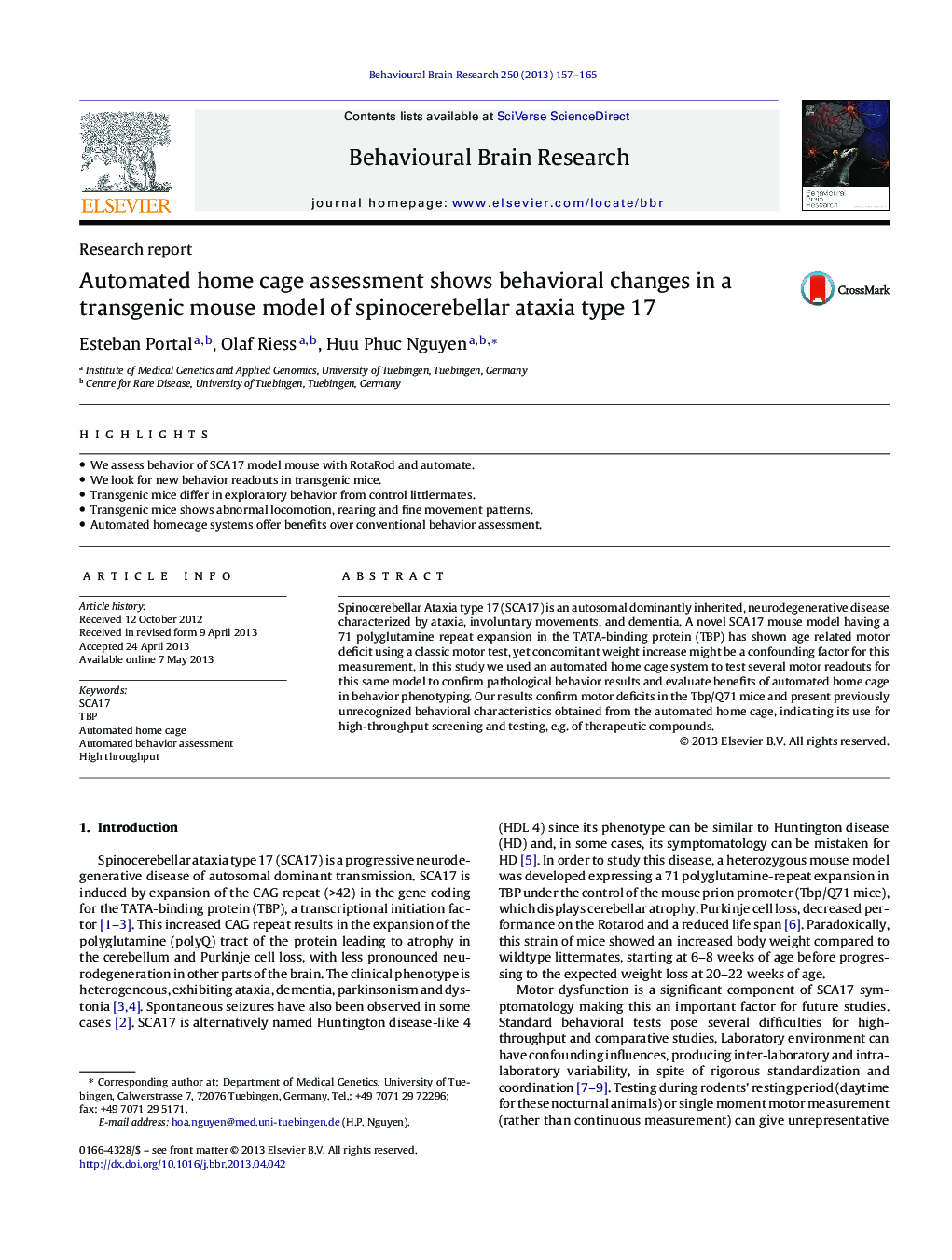| Article ID | Journal | Published Year | Pages | File Type |
|---|---|---|---|---|
| 6258980 | Behavioural Brain Research | 2013 | 9 Pages |
•We assess behavior of SCA17 model mouse with RotaRod and automate.•We look for new behavior readouts in transgenic mice.•Transgenic mice differ in exploratory behavior from control littlermates.•Transgenic mice shows abnormal locomotion, rearing and fine movement patterns.•Automated homecage systems offer benefits over conventional behavior assessment.
Spinocerebellar Ataxia type 17 (SCA17) is an autosomal dominantly inherited, neurodegenerative disease characterized by ataxia, involuntary movements, and dementia. A novel SCA17 mouse model having a 71 polyglutamine repeat expansion in the TATA-binding protein (TBP) has shown age related motor deficit using a classic motor test, yet concomitant weight increase might be a confounding factor for this measurement. In this study we used an automated home cage system to test several motor readouts for this same model to confirm pathological behavior results and evaluate benefits of automated home cage in behavior phenotyping. Our results confirm motor deficits in the Tbp/Q71 mice and present previously unrecognized behavioral characteristics obtained from the automated home cage, indicating its use for high-throughput screening and testing, e.g. of therapeutic compounds.
